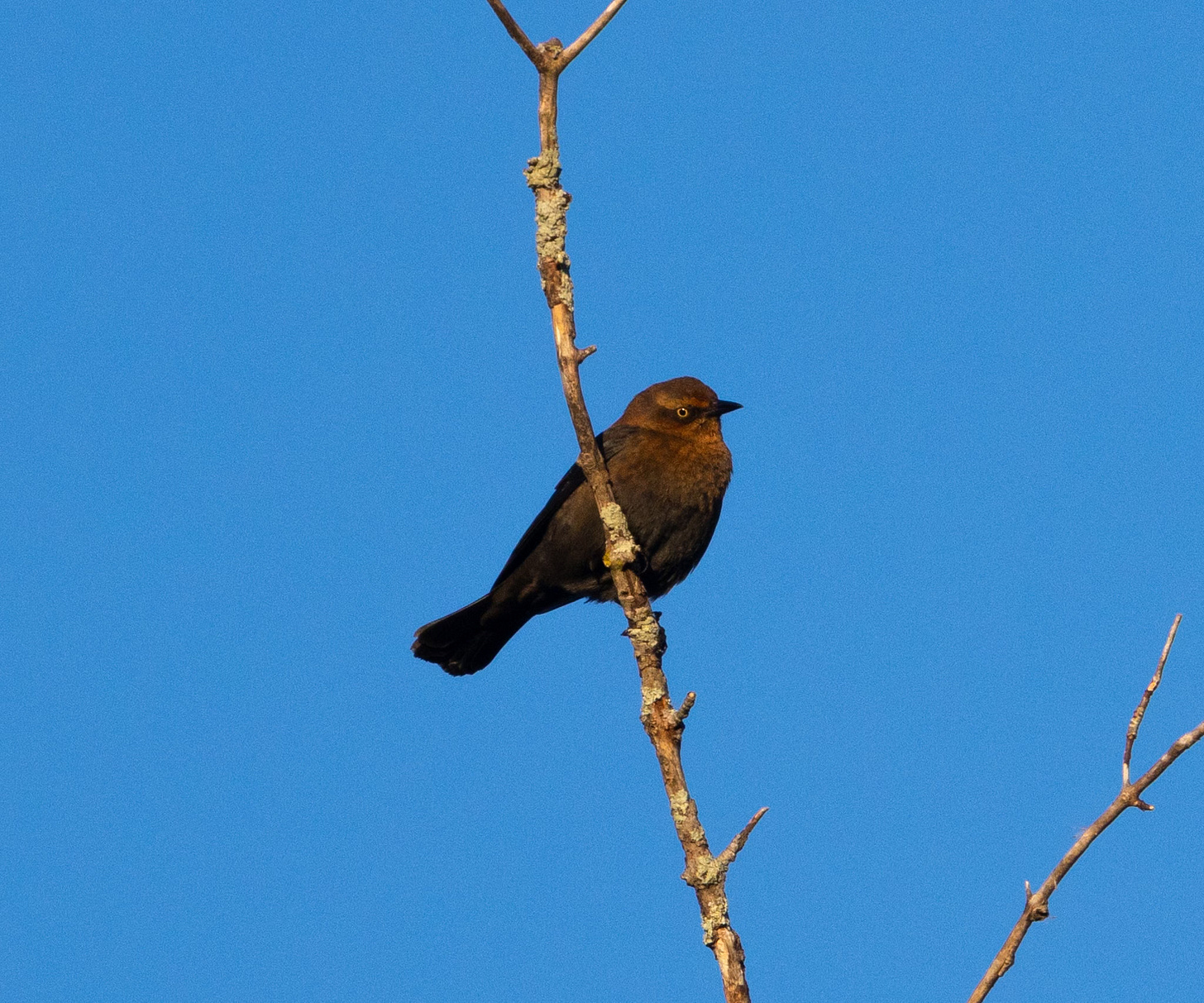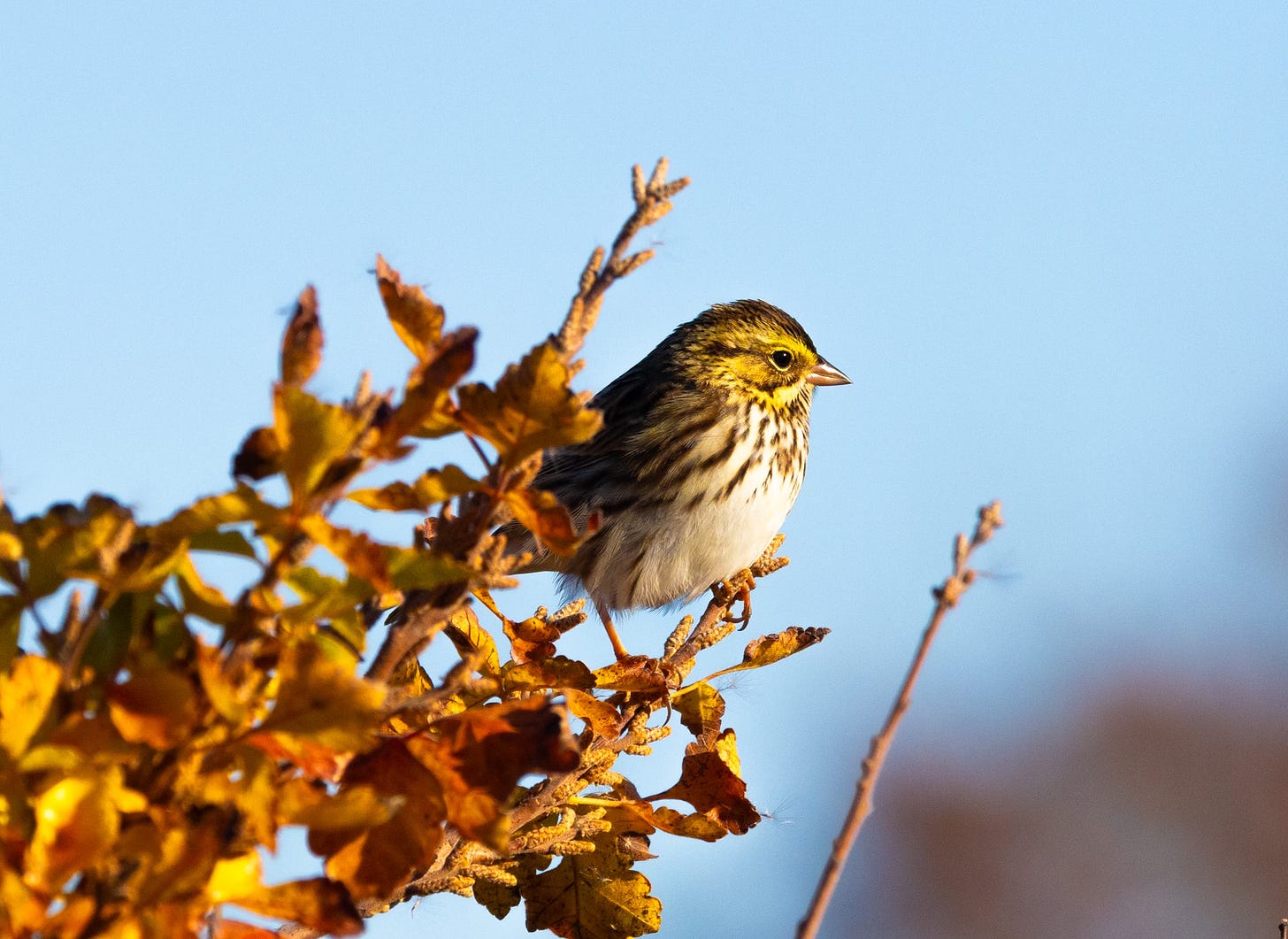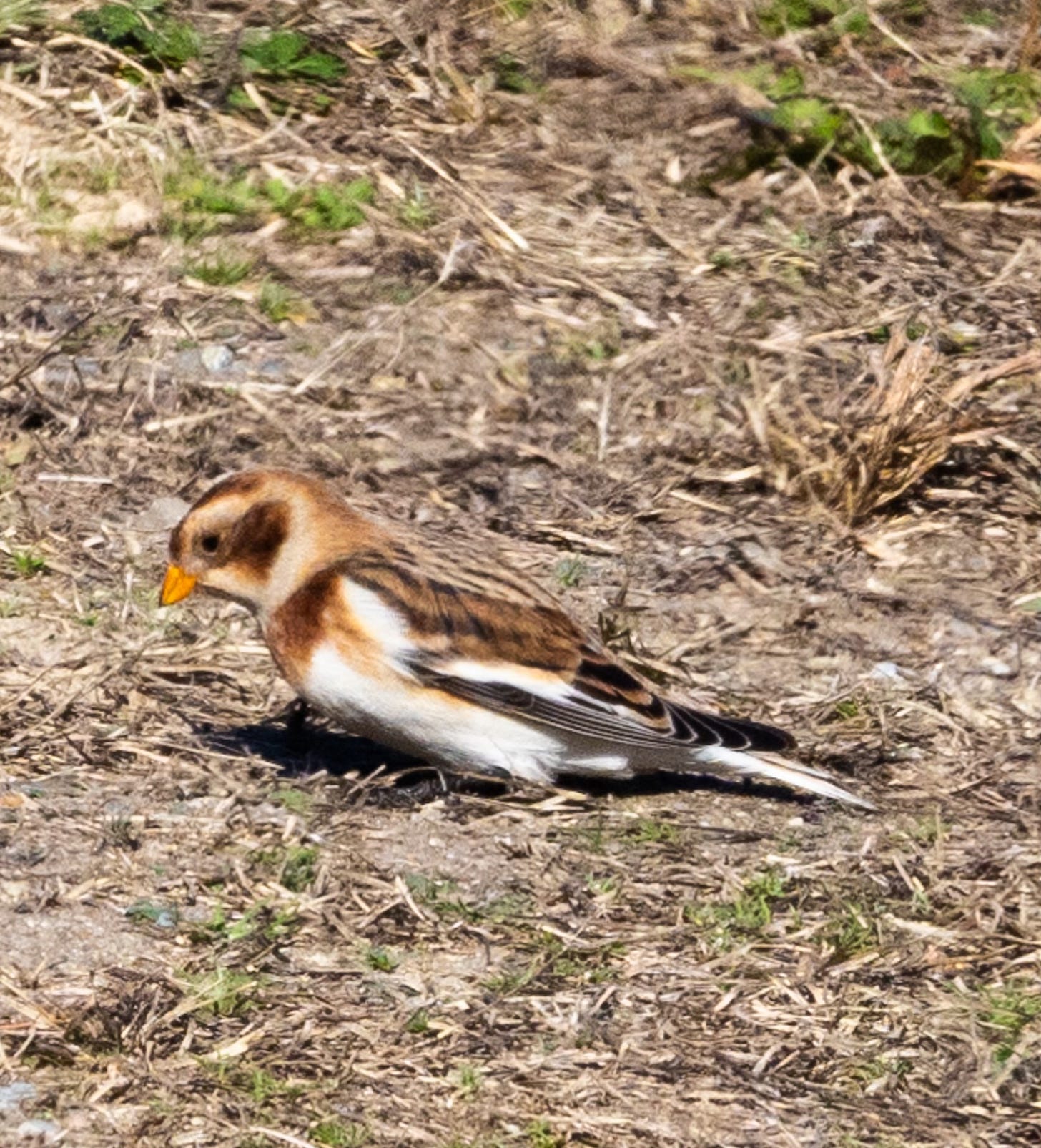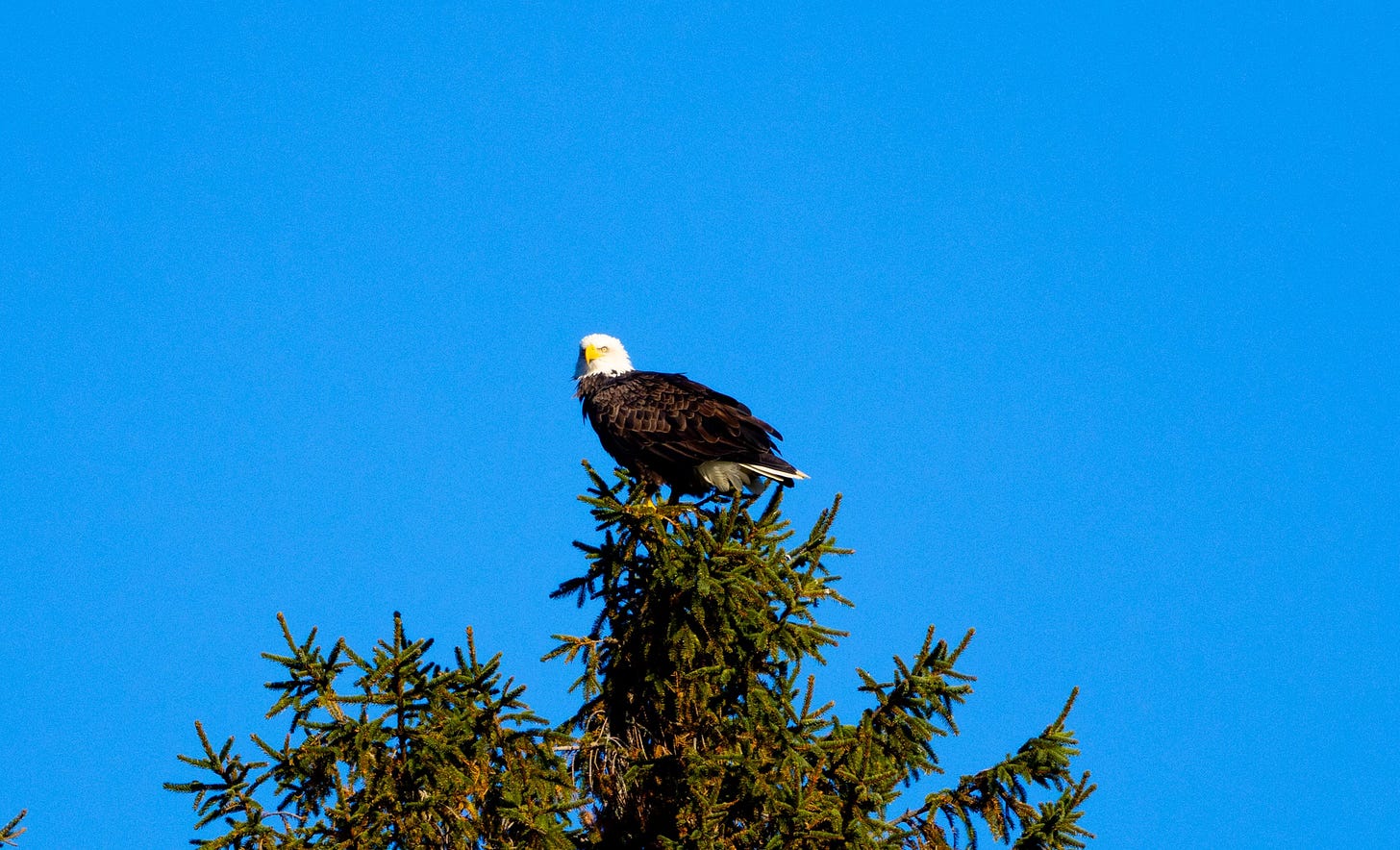1. Let’s begin with something you likely did not know about crows – they can hold a grudge!: They dive bombed, landing on her head and taking off again eight times by Ms. Joyce’s count. With hundreds of people gathered outdoors to watch fireworks that July evening, Ms. Joyce wondered why she had been singled out. “I’m not a fraidy-cat, I’m not generally nervous of wildlife,” said Ms. Joyce, whose crow encounters grew so frequent this past summer that she changed her commute to work to avoid the birds “But it was so relentless,” she said, “and quite terrifying.” Ms. Joyce is far from alone in fearing the wrath of the crow. CrowTrax, a website started eight years ago by Jim O’Leary, a Vancouver resident, has since received more than 8,000 reports of crow attacks in the leafy city, where crows are relatively abundant. And such encounters stretch well beyond the Pacific Northwest. (via The New York Times)
2. An inspiring story from the Washington Post – “nature is a place where it’s okay to be blind”: Jerusalem Crawley grew up in Detroit, where he didn’t have much contact with nature. “I was a typical city kid and birds were the last thing on my mind,” said Crawley, now 22, who is visually impaired. “I didn’t know one bird from another. I thought they were all the same.” Then when Crawley was 8, his mom sent him to Camp Tuhsmeheta (short for touch, smell, hear and taste) where he met Donna Posont, who was leading a class about birding. Posont, who is blind, introduced him and other blind and visually impaired summer campers to the sounds of American robins, blue jays, cardinals, birds of prey and woodpeckers. (via The Washington Post)
By Hap Ellis, Rusty Blackbird – Millennium Park, Boston, MA.
3. Great piece in Cornell Lab’s Living Bird on a very difficult challenge in Indonesia: The two bird-keepers wrestled each other to the ground, exchanging blows while a chorus of bird song filled the grounds at Stadium Sultan Agung, a 35,000-seat soccer stadium on the Indonesian island of Java. Military police descended quickly on the scene, separating the men and hauling them away as hundreds of White-rumped Shamas chirped, whistled, and fluttered in the rafters. This was the Piala Raja (King’s Cup), one of the most prestigious bird-singing contests in Indonesia, and such behavior would not be tolerated. Each bird sang from an ornate cage hung delicately alongside its counterparts as throngs of fans clad in monogrammed hats and T-shirts—some even waving team flags—cheered from the sidelines. Amidst the chaos, human judges patrolled the arena, listening intently. (via All About Birds)
4. Birds and wind power - understanding bird migration pathways in Australia: The yearly travel plans of birds up and down Australia’s east coast have been revealed for the first time, using the same tool that tracks the weather – a development experts say could have “profound” implications for conservation as more windfarms are built. Scientists have used weather radars to show that bird migration across eastern Australia occurs in structured patterns. While many Australian bird species are known to be seasonally migratory, scientists previously did not know to what extent a distinct system existed. New research, published in the journal Current Biology, used years of radar data to determine two pulses of bird migration across the east coast – northwards from January to June and southwards from July to December. (via The Guardian)
5. A portal into parrots – interesting piece from NPR: Some birds are feathered tufts of color so resplendent that they stand out brilliantly from their surroundings. “You have to ask why birds would do this,” says Joe Corbo, a biologist at Washington University in St. Louis. “And one of the leading hypotheses is that the male has elaborate ornaments or colors that are attractive to the female.” Most birds with bright yellow or red feathers — think goldfinches and cardinals — use pigments called carotenoids to make those colors. “The reason that a bird’s egg’s yolk is a bright yellow-orange is because it’s full of carotenoids,” says Corbo. “And so then, during development, the bird mobilizes the carotenoids from the yolk and then deposits them in the developing feathers.” (via National Public Radio)
6. We know they’re considered pests, but they can be funny pests: An angry-looking myna bird has become a viral video star after landing directly in front of a highway traffic camera in New Zealand. The black-and-yellow tropical bird stares curiously into the camera overlooking a section of road near Auckland, New Zealand’s largest city, its beak open as it appears to squawk loudly. It then flies off before returning for a few more seconds. The video was posted on Facebook on Oct. 21 by the New Zealand Transport Agency, which operates the cameras and joked that the bird “needs to myna its own business.” “The myna bird is a pest in New Zealand — it’s aggressive towards our native birds, destroying their nests, eating native fruit, and taking over other birds’ territory, so this definitely wasn’t a welcome cameo on our cameras,” the agency said. (via NBC News)
By Hap Ellis, Savanah Sparrow – Millennium Park, Boston, MA.
7. If it’s Climate bonds, it has to be the Golden State: Birds are definitely on the ballot this November. In fact, rarely will we get a chance to help birds and habitat so much by merely casting our vote. Proposition 4—the Climate Bond—will invest $10 billion across California on wide array of proven strategies to address the challenge of climate change. This will include habitat protection, water, wildfire prevention, and restoration—all of which are vital to helping ensure a future for our most vulnerable birds. For instance, just as the Threatened Western Snowy Plover is showing signs of bouncing back, climate change-driven sea-level rise and extreme weather threatens to reduce habitat and food resources. Prop. 4 will devote $1.2 billion toward coastal habitat protection, combatting sea level rise, and improving coastal resilience. In the Central Valley, where dwindling water and drought threatens survival of birds like the Tricolored Blackbird, Yellow-billed Magpie, and the Northern Pintail, Prop. 4 would come to the rescue with $3.8 billion in clean water, drought response, and flood protection. (via Audubon California)
8. Who needs new friends as they age – not these birds says a new study: Like people, birds have fewer friends as they age, but the reasons why are unclear. New research published in the journal Philosophical Transactions of the Royal Society B: Biological Sciences suggests they may just have no drive to. This is a special issue of the journal on understanding age and society using natural populations. In humans, it's often been assumed that older people have fewer friends because they're pickier about who they spend their time with. There's also the issue that there are fewer people of their own age around. But it's hard to pick apart the various potential causes for humans, so researchers have turned to animals. The team behind the new research, led by Imperial College London, studied an isolated population of sparrows on the island of Lundy, in the Bristol Channel. (via Phys Org)
9. “606” - Another story on Bald Eagles and avian influenza: I saw two bald eagles today soaring high in the sky together. I haven’t seen or heard any for quite some time. Raptors, in general, have been few and far between during this year’s summer and fall seasons. A few readers of this column have noticed this phenomenon, too. Two readers recently drew my attention to an article published in the Washington Post on Sept. 5, 2024. Its title, “In eagle nirvana, avian flu is decimating America’s national bird.” It is such an important discussion that I have chosen to summarize the Post’s article about the avian influenza issue, and its effect on our national bird. The Post article is quick to point out that this figure just represents the eagle remains that have been recovered and tested. Moreover, it is thought that this number does not reflect the total decimation. In fact, it is only the tip of the iceberg. (via Chinook Observer)
10. Birders turn a lake in India into cool “patch” (an eBird term): Puzhuthivakkam lake was hidden in plain sight. From Velachery Main Road, this waterbody is easily get-at-able. From this arterial road, roll into Madipakkam Main Road (also known as Bazaar Main Road) and before long, the lake heaves into view. Despite its door being always open, the mat lying in front of it remained undisturbed except by residents of houses ringing it. The lake was not having visitors scuffing their shoes on that mat. Even for a majority of those residents, the interest in the lake was hardly connected with the lake. The neatly-raised bund providing an ideal ramp to walk on, the space enabled them to limber up for the day. On hindsight, that was an opportunity missed, an opportunity to record natural history. There was some birding interest from time to time, but it was desultory. (via The Hindu)
By Hap Ellis , Snow Bunting – Millennium Park, Boston, MA.
11. If you are in Malaysia next October, consider taking this festival in: The Borneo Bird Festival was held at the Rainforest Discovery Centre in Sandakan over the weekend, bringing together birders from all over Malaysia and neighbouring countries to participate in numerous birding activities. Official foreign participants represented at the Bird Festival were from Vietnam, the Philippines, Taiwan, the US and the United Kingdom. Co-organized by the Sandakan Borneo Bird Club and the Sabah Forestry Department, it was the 14th edition of the Borneo Bird Festival since it was first launched in 2009. Officiating the opening ceremony was Julinus Jimit, Chief Executive Officer of the Sabah Tourism Board, representing Datuk Joniston Bangkuai, the State Assistant Minister of Tourism, Culture and Environment. (via The Borne Oposi)
12. Then again, if you’re looking for thousands (!) of puffins, go to Vigur Island: First there’s a shrill, high-pitched shriek. Then a flurry of white and grey wings as the Arctic tern dive bombs. I squeal myself as I feel the small seabird’s sharp vermilion beak strike the stick I’m holding aloft to protect my head from an aerial attack. I don’t dare look up in case it doubles down with a dump of fishy guano.Surrounded by the brooding, flat-topped mountains of Iceland’s Westfjords, there’s something a bit Hitchcock-esque about Vigur island. But the fiercely territorial terns nesting here are more bark than bite, says our walking tour guide Felicity Aston. (via Adelaide Now)
13. College birding in the news – this “ode” from a Bates Student: What is your favorite spot on campus?” Almost all of us have been asked that question before—perhaps as an icebreaker at a club meeting or while showing your family around during Parents’ Weekend. It’s a tough choice, but my answer would have to be Lake Andrews. Think about it: how many other colleges do you know of that have a lake on campus? It may be small, but Lake Andrews is surprisingly mighty in terms of biodiversity. You may be familiar with the Mallard ducks that frequent the lake or the American Crows that can be seen scrounging around campus trash cans. But have you ever seen a Golden-Crowned Kinglet? Or a Hooded Merganser? You can spot some truly spectacular birds at Lake Andrews with just a little time, patience and determination. If the mere sight of these lovely little creatures isn’t enough to convince you though, there are many other aspects of bird-watching that make it a perfect hobby for college students. (via The Bates Student)
By Hap Ellis, Bald Eagle -Parsons Beach, Kennebunk, ME.
14. Let’s conclude with a broadcast from Oregon Public Broadcasting (OPB) on how AI can help researchers find and study elusive birds like the Northern Spotted Owl – worth a listen: For researchers, endangered and threatened birds like the Northern Spotted Owl and the Marbled Murrelet can be incredibly hard to find and study in the wild. Now, new research shows that artificial intelligence may be able to help. As first reported in Hakai Magazine, researchers have been training AI to correctly identify elusive species of birds in the wild through sound. Matthew Betts is a professor and chairs the Department of Forest Ecosystems and Society at Oregon State University. He coauthored the study and joins us to share more about the development of this AI and its implications for future research. (via OPB News)
Bird Videos of the Week
Video by Badgerland Birding, “I Went 30 Miles Offshore to Get This Photo”.
Cornell Live Bird Cam - Panama Fruit Feeder Cam.
Cornell Live Bird Cam - Halloween Bird Cams.








